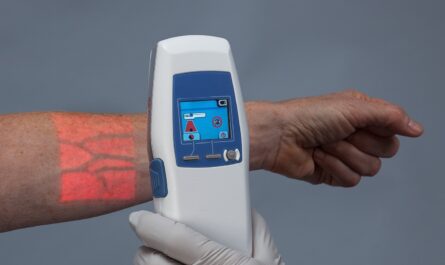
Introduction to Medical Robotic Systems
Medical robotic systems are computer-controlled machines that assist surgeons during complex medical procedures. These robotic surgical systems allow doctors to perform minimally invasive procedures with more precision, flexibility and control than is possible with conventional techniques. Some key advantages of medical robotic systems include reduced patient recovery time, less hospital stays, fewer complications, and smaller incisions resulting in fewer scars.
Da Vinci Surgical System
One of the most widely used medical robotic systems is the da Vinci Surgical System made by Intuitive Surgical. It is a surgical platform that consists of an ergonomically designed surgeon’s console and four interactive robotic arms. The surgeon sits at the console and uses hand controls and foot pedals to precisely maneuver instruments inside the patient via the robotic arms. The console provides 3D high definition views of the surgical field. Over 7,000 da Vinci Systems have been installed in hospitals around the world to assist surgeons perform procedures in areas such as gynecology, urology, thoracic, and general surgery.
robotic-assisted prostatectomy is a minimally invasive alternative to traditional open prostate surgery for treating prostate cancer. With the da Vinci System, the prostate gland can be removed through just a few small incisions using the robotic arms. This results in less blood loss, less pain after surgery, shorter hospital stays and faster recovery times compared to open surgery. The 3D camera and wristed instruments of the system allow for better visualization and more precise dissection and suturing inside the body.
Robotic Heart Surgery
While still a developing application, robotic surgery is also being used to perform complex cardiac procedures. The da Vinci system is used for mitral valve repairs, bypass surgeries, and even full heart transplant operations. The benefits of robotic cardiac surgery include smaller incisions, better visualization of structures, elimination of physiological hand tremors, increased surgeon control and ergonomics. Researchers are exploring new techniques using dual robotic systems to facilitate complex multi quadrantic minimally invasive surgeries on the beating heart without use of heart-lung bypass machines.
Other Available Medical Robotics
Aside from the da Vinci surgical platform, other medical robotic systems are available to assist doctors. The Mazor X Stealth Edition is a robotic guidance system used for spine surgeries like fusion procedures. It provides 3D images, preoperative planning tools and robotic arm guidance to precisely place screws and implants during spine surgeries.
For orthopedic procedures, the MAKO System is a robotic-arm assisted platform used for partial and total knee replacements. It creates a 3D model of the patient’s knee and allows the surgeon to individually tailor and position implants usingCT scans for improved alignment and implant placement.
For endoscopic procedures, the Flex Robotic System is a compact and versatile robotic platform with single-port capabilities. It features three robotic instrument arms and an endoscopic camera controlled by a surgeon console. This gives surgeons improved control and dexterity for performing natural orifice transluminal endoscopic surgeries (NOTES).
Advantages of Surgical Robotics
The use of robotics in surgery provides clear advantages over traditional open or laparoscopic techniques. Some key benefits of surgical robotics include:
– Improved Dexterity and Precision – Robotic systems allow for enhanced control and finer movements of surgical instruments compared to human hands alone. This precision helps avoid damage to nearby tissues and nerves.
– 3D High Definition Visualization – The magnified 3D views robotic systems provide give surgeons clearer visibility of anatomical structures deep inside the body.
– Increased Range of Motion – The robotic arms have a broader range of motion compared to the human wrist. Surgeons can reach hard to access areas more easily.
– Filtering of Hand Tremors – Tiny involuntary motions in a surgeon’s hands are filtered out, allowing steadier and more exacting movements.
– Improved Ergonomics – The surgeon performs the procedure while seated comfortably at a console monitor rather than standing bent over the patient. This prevents fatigue.
– Smaller Incisions – Robotic tools are longer and slender which combined with the system’s dexterity allows for less invasive mini-port surgery rather than large open incisions.
Drawbacks of Surgical Robotics
While medical robotics systems provides many advantages, there are still some shortcomings and challenges to address:
– Learning Curve for Surgeons – It takes time for surgeons to learn how to effectively operate the robotic system’s hand controls and software. An experience threshold may exist.
– Cost and Expense – The medical robotic platforms, maintenance contracts and proprietary instruments have a high initial price tag that most hospitals struggle to afford.
– Restricted Movement Range – Robotic arms have limited flexibility compared to a human surgeon’s wrist so they may not be able to reach every area inside the body.
– Dependence on Computer Systems – The procedure is reliant on software and computer processing power. Technical malfunctions could potentially disrupt the workflow.
– Lack of Haptic Touch Feedback -Surgeons cannot palpate tissues or feel forces like they can with open surgery. This means missed tactile cues must be compensated.
Despite current drawbacks, it is clear medical robotic technology brings vast improvements to surgery when used appropriately. As the systems evolve and costs decrease, their use is expected to substantially expand the scope and benefits of minimally invasive surgical techniques. Robot-assisted surgery potentially represents the future of how many common medical procedures will be performed.



